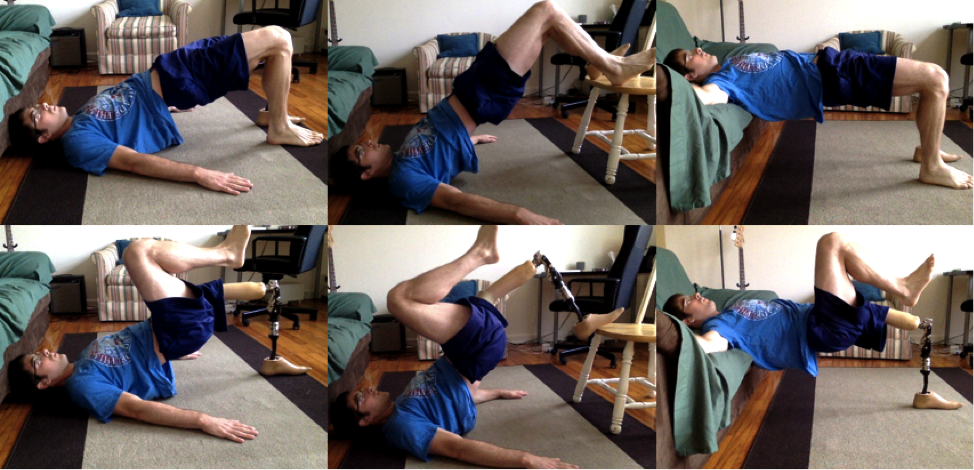Bridge Variations
Ever wanted to know which type of bridging hits your glutes (bum) more?
A study from an amputee patient selected various types of bridging, placed EMG sensors over the Gluteus Maximus muscle and tested accordingly. He tested using two different types of contractions, one being a 5 second isometric hold, and the other a series of repetitions over a period of 20 seconds.
The Bridge variations* he used:
- Traditional bridging – Feet and shoulders on the ground
- Feet elevated bridging on a chair
- Shoulders elevated on a bed, or what’s called a “Hip Thruster”
*He also used one leg and double leg variations of the above.
All the data was taken and recorded into graphs. He divided the data for his prosthetic leg, his natural leg, as well for the different type of contraction used being the isometric holds and the dynamic repetition over 20 seconds. (see link for graphs)
And the Winner is………
- The shoulder elevated bridging “Hip Thruster” variation recorded the highest gluteal activation value for average value recorded, as well as peak (highest value recorded).
- In 2nd place was flat bridging, followed by,
- Elevated bridging coming in 3rd.
On average, one legged or unilateral bridging elicited 2.3 times the activation than double bridging, with the greatest increase being 3.8 times for shoulder elevated bridging.
What to take out of this study?
- Shoulder elevated bridging is going to hit your glutes the hardest! Especially unilateral shoulder elevated bridging.
- One legged bridging will always be more challenging for your glutes, as well as your core, than double legged.
- Feet elevated bridging elicits less of a gluteal contraction than the other variations due to help from the hamstrings and adductor muscles.
- Add resistance such as barbells, dumbbells and resistance bands and to get more ‘Bang for your Butt’.
Many thanks,
Aaron
Aaron Thomas
Senior Physiotherapist

